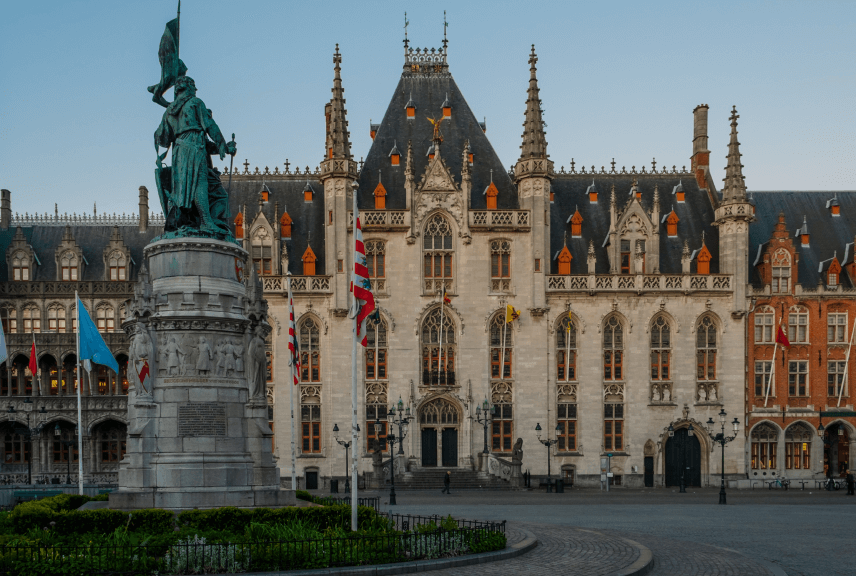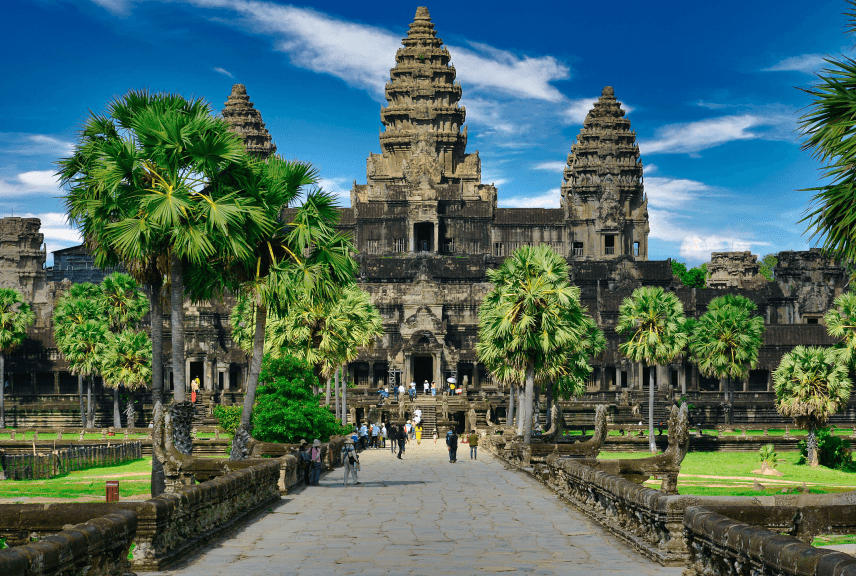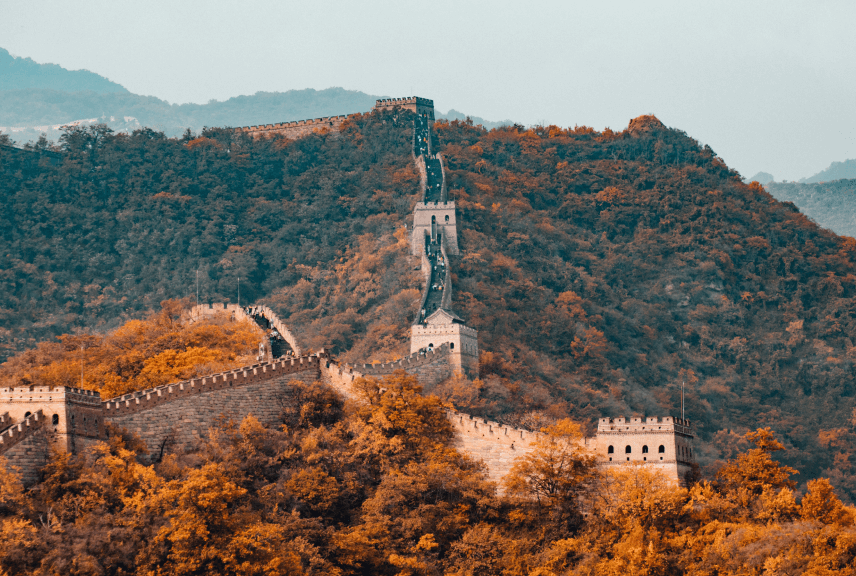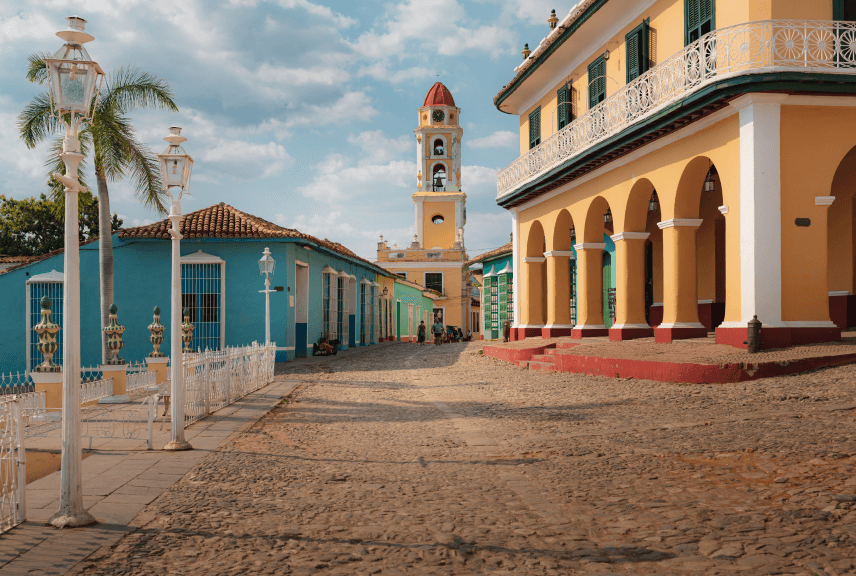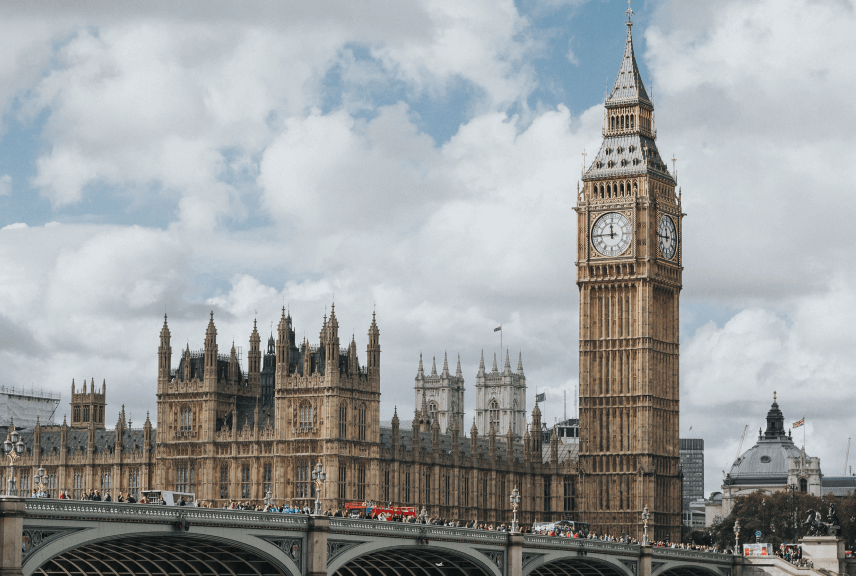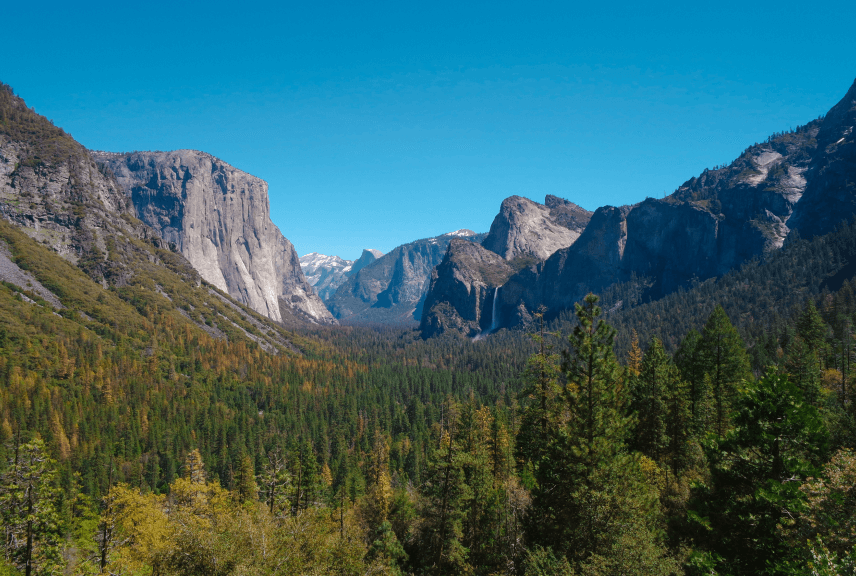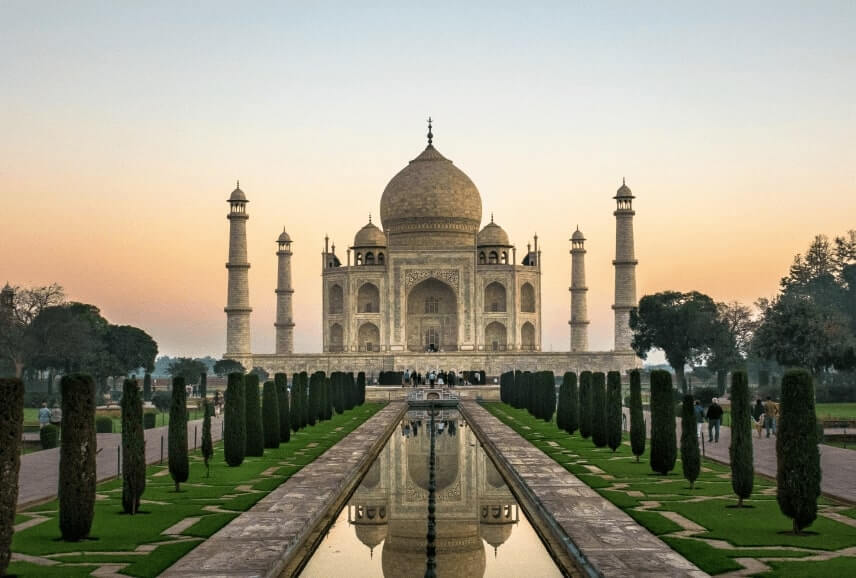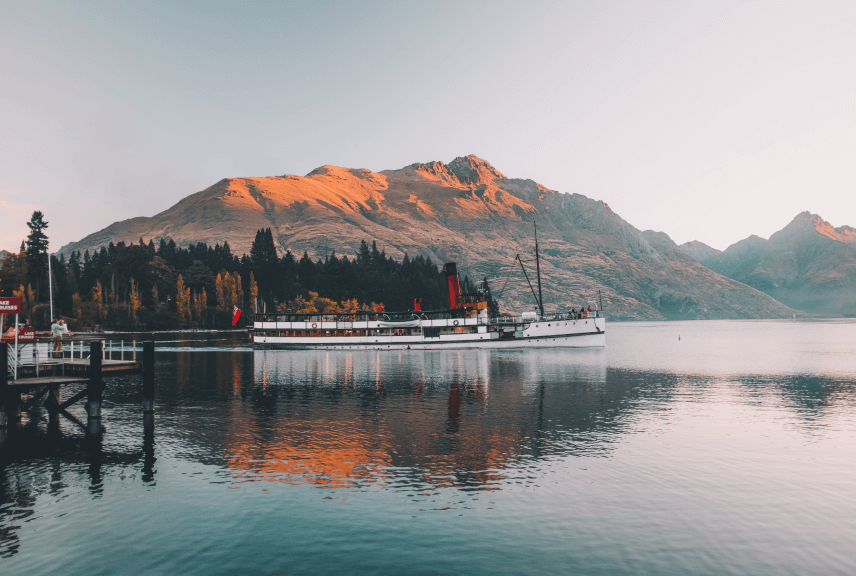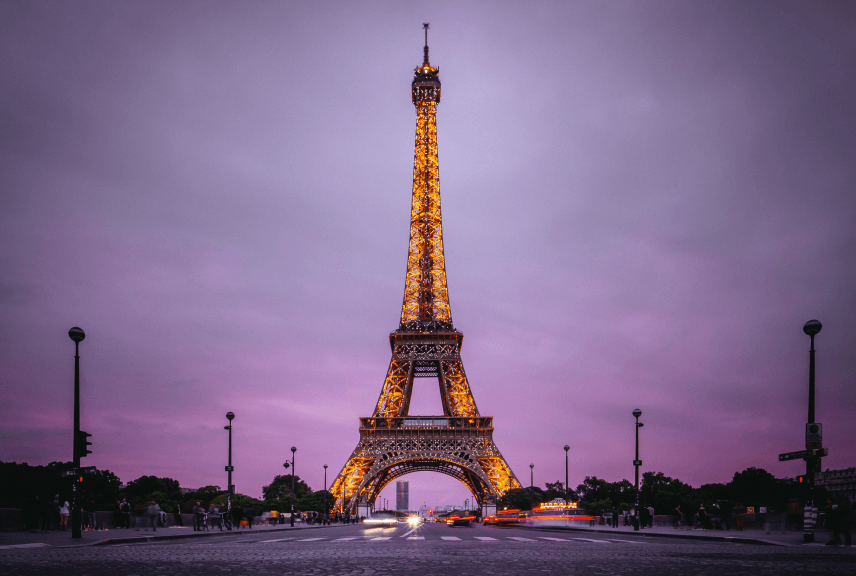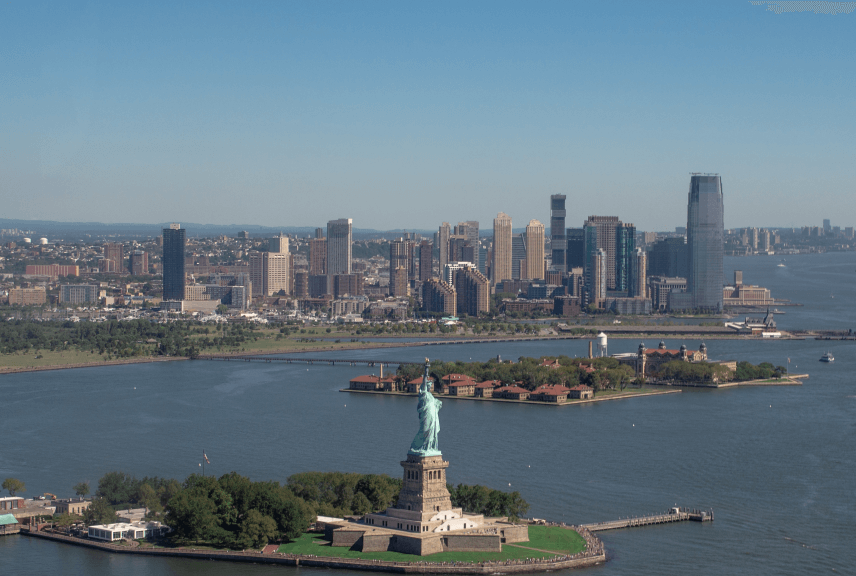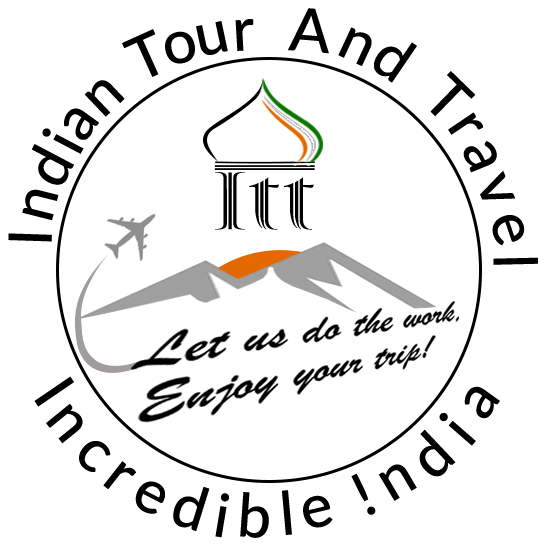The grave of Mirza Asadullah Khan ‘Ghalib,’ (1797-1869) is located north of the enclosure of Chaunsath Khamba, close to the Nizamuddin shrine in Nizamuddin West. Mirza Ghalib, as he is popularly known, is considered the Urdu Shakespeare and was the greatest poet of the nineteenth century. He was a great writer of ghazals, the lyrical love poems of Urdu. He was a friend of the Mughal Emperor Bahadur Shah ‘Zafar’ and was appointed the teacher of Bahadur Shah II.
Delhi History
We not only believe in offering friendly, reliable professional services but also in delivering the best and ‘more than what is promised… which one can experience while traveling’. With our in depth knowledge of colourful and vibrant states of India… let it be camel safari in the desert of Rajasthan or a house boat cruise in backwaters of Kerala… we make sure that our guest will have an Indian experience of a life time.
Moth-Ki-Masjid
Built by Miyan Bhuwa, a minister during the reign of Sikandar Lodi (1517-26) in the early 16th century, Moth-ki-Masjid is located behind one of the modern localities of the capital, South Extension Part II. Situated in the village named Masjid Moth, the mosque can be reached either by taking the Khel Gaon Marg through the Uday Park area or the Aurobindo Marg alongside Yusuf-Sarai.
Mubarak Shah’s Tomb
Located in the Kotla Mubarakpur area, behind the plush South Extension Part I locality, Mubarak Shah’s tomb is considered to be one of the finest examples of octagonal Sayyid tombs. The tomb can be reached either by taking the August Kranti Marg or the Ring Road through the Gurdwara Road. Built around 1434 when Mubarak Shah Sayyid, the second ruler of the Sayyid dynasty died, the tomb is today survived by its southern gate and a mosque to the west.
Museum of the Archaeological Survey of India
Diwan-i-Am: Raised on arches supported by pillars and with a façade of nine engraved arch openings, the Diwan-i-Am is the next structure, which one comes across, inside the fort complex. It is the Hall of Public Audience where the emperor received the general public and listened to their complaints. Justice was carried out at once and various methods were used to punish the convict, including beheading! It houses a marble canopy or baldachin under which stood the throne of the Emperor.
Mutiny Memorial
The Mutiny Memorial is located on Rani Jhansi Road, about 500 meters south of Hindu Rao Hospital on the Northern Ridg. The British built this octagonal tapering tower of red sandstone in 1863. Now known as Ajitgarh, Its architecture shows a ‘Gothic influence.’
Iskcon Temple
The ISKCON Temple of Delhi is located at Raja Dhirshain Marg, Sant Nagar, near the East of Kailash locality. It is one of the 40 temples in India that belongs to the International Society for Krishna Consciousness, dedicated to Lord Krishna. A part of the Hare Krishna Movement started by Acharya Bhaktivedanta Swami Prabhupada, the devotees and followers of the Hare Rama Hare Krishna cult built this temple in 1998 to disseminate the message of the Bhagwad Gita.
National Children’s Museum
National Children’s Museum in Bal Bhawan Complex on Kotla Marg is an appealing museum for children where they are informed about India’s traditin, culture and life in an interesting manner taking into consideration a child’s psychology.
National Gallery of Modern Art
Housed in the imposing former residential palace of Maharaja of Jaipur, National Gallery of Modern Art (NGMA) is situated at the eastern end of Rajpath near India Gate administered by the Government of India. Inaugurated on March 29, 1954, the gallery has a wonderful collection of around 15000 paintings, sculptures and works of arts by Indian as well as international artists.
National Gandhi Museum
Just opposite the ‘samadhi’ of Mahatma Gandhi at Rajghat lies the National Gandhi Museum (Rashtriya Gandhi Sangrahalaya), the two storey museum which has a very rich collection of photographs, relics, memorabilia closely connected with Mahatma Gandhi, books, journals and documents, audio-visual materials, exhibitions and art pieces.
National Philatelic Museum
Located in Dak Bhawan, Sardar Patel Chowk on Parliament Street or Sansad Marg, National Philatelic Museum can aptly be described as a ‘philatelist’s paradise’. The museum has an extensive collection of rare stamps of pre and post independence period.
National Police Museum
Established in 1991, National Police Museum is located at the CBI headquarters in CGO Complex. It is an interesting museum for all those who are curious to know how police work, investigate crimes, and keep vigilance. The museum has some very fascinating exhibits on display related to serious crimes and their investigation.
National Science Center
National Science Centre, on the main Bhairon Road, before the gate no-1 of Pragati Maidan is one of the largest and best science centres of National Council of Science Museum (NCSM) with good scientific models, participatory exhibits, interesting artifacts on display. Established with the aim to create and develop interest of the students in the field of science, a visit to the centre would be a fun as well as learning for anybody.
Nehru Memorial Museum
Nehru Memorial Museum is located in one of the most imposing and stately buildings of Lutyen’s New Delhi, Teen Murti Bhavan on Teen Murti Road. Originally the official home of the British commander-in-chief of the Indian army, this graceful colonial building became the residence of India’s first Prime Minister and national leader, Jawaharlal Nehru, who lived here for sixteen years.
Nehru Planetarium
Located within the premises of Teen Murti House on Teen Murti Road, Nehru Planetarium was established on 6th February 1984 with the aim to promote space education and astronomy among the common people especially the youth of the region. The planetarium has a good sky theatre with the capacity of seating 270 viewers at a time for screening taped and live public shows on various cosmic topics like informing about the cosmic heritage, the solar system or history of a particular star.
Nicholson Cemetery
A few meters west from the Kashmiri Gate Interstate Bus Terminal (ISBT), at the northeastern end of Boulevard Road, is one of the earliest British cemeteries in Delhi, the Nicholson Cemetery.
Nigambodh Gate
The last of the remaining gates of the old walled city is Nigambodh Gate. Located on northeastern edge the city on the Ring Road near the Yamuna Bazaar, Nigambodh Gate derives its name from the popular Nigambodh Ghat. According to the legend the ghat belongs to the period of Mahabharata. It was on this ghat that Lord Brahma is said to have bathed and recovered his lost memory and sacred books and thus the name Nigambodh Ghat, meaning realization of knowledge.
Nili Masjid
Kasaumbhil, a nurse by profession built the Nili Masjid or the blue mosque in about 1505-06 during the reign of Sikandar Lodi (1489-1517). She was the nurse of Fath Khan, the son of Khan-i-Azam Masnad, the governor of Delhi. Located within the Hauz Khas Enclave, the central chamber of the mosque is all that is left at present.
North and South Block
Built on Raisina Hill either side of Rajpath, North and South Block, also known as the Secretariat Buildings are among the most impressive state office buildings of the world. North Block houses the Ministry of Home Affairs and the Ministry of Finance while South Block houses the Ministry of External Affairs.
Old Secretariat
Located on the main Ring Road (Mahatma Gandhi Road), just near the Civil Lines Metro Station is the Old Secretariat, the present seat of the Delhi Legislative Assembly (Vidhan Sabha). Designed by E. Montague Thomas, the building was constructed in 1912 to house the secretariat after the British capital shifted from Calcutta (Kolkata) to Delhi.
Parliament House
Parliament House, located at the end of the Parliament Street is an imposing circular colonnaded building where the representatives of world’s largest democracy meets and decides the fate of the over 1 billion people of India. Though just one storey tall, the building stands 75 feet high and measures 570 feet in diameter. It was originally planned to be just an extension of the Viceroy’s House (Rashtrapati Bhavan) but after the Montague-Chelmsford reforms of 1919, it was designated as a Parliament House or Legislative Assembly of the country.
Pir Ghaib
Southwest of Chauburji Masjid in the grounds of Hindu Rao Hospital lies a rubble built double storey structure, with the remains of a Baoli or step well. It is located in a neighborhood popularly known as Pir Ghaib, which means ‘Vanishing Saint’. Built around 1630 AD by Feroz Shah Tughlaq as a part of his either Kushk-i-Shikar (hunting lodge) or Kushk-i-Jahan Numa (world showing palace), the monument is so called after a saint who suddenly disappeared while meditating at the cenotaph in the northern apartment of the monument.
Purana Qila
Located on the eastern side of India Gate and north of Humayun’s tomb, the Purana Qila occupies the ancient mound, which perhaps conceals the ruins of the city of Indraprastha of the Indian epic, the Mahabharata. Emperor Humayun laid the foundations of a city named Dinpanah or ‘Refuge of the Faithful’ here, in 1534, and the inner citadel of this city is the Purana Qila.
Qila Rai Pithora
The Chauhan prince of Sakambhari, Vigraharaja IV captured Delhi from the Tomar Rajputs in the latter half of the 12th century. The grandson of Vigraharaja IV, Prithviraja Chauhan III, built Qila Rai Pithora, the first city of Delhi, by extending the citadel of Lal Kot, and constructing huge ramparts and moats around it. The city derived its name from the title of Prithviraja Chauhan and thus came to be known as Qila Rai Pithora, with Lal Kot as its southwestern base.
Qudsia Bagh
Qudsia Bagh is located on the main Shamnath Road, north of Inter State Bus Terminal (ISBT), and near Kashmiri Gate. The garden dates back to the mid-eighteenth century. Laid by Nawab Qudsia Begum in 1748, the dancing girl who later became wife of Emperor Muhammad Shah, the garden once housed a palace, waterfall, a mosque, a summer lodge and a beautiful flower and fruit garden.
Qutab Minar
The origins of Qutab Minar are shrouded in controversy. Some believe it was erected as a tower of victory to signify the beginning of the Muslim rule in India. Others say it served as a minaret to the muezzins to call the faithful to prayer. No one can, however, dispute that the tower is not only one of the finest monuments in India, but also in the world.
Raj Ghat
The Raj Ghat is the last resting place of the Father of the Nation, Mahatma Gandhi. The place is not far away from the banks of River Yamuna. Mahatma Gandhi was cremated here on 31st January 1950 following his assassination on 30th January 1950 by Nathu Ram Godse. the memorial stone is a simple square platform made of black stone. The last words uttered by Mahatma “Hey Ram” are inscribed near the black platform. An eternal flame keeps burning in a copper urn in the Raj Ghat.
Rajon-ki-Bain and Mosque
Located just behind the local bus station, about 400 meters away from Gandhak-ki-baoli in the Archaeological Survey of India Park are the Rajon-ki-Bain and Mosque. These Lodi era monuments are in state of serious neglect with massive outgrowth of wild vegetation in and around the structures.
Rajpath
Earlier known as the ceremonial Kingsway, Rajpath, which is 2.4 kilometer long, was planned as the central avenue of Sir Edwin Lutyen’s New Delhi. The street is so well designed that even after more than six decades, the central vista of Delhi offers a very open feel to its visitors. It is lined with beautiful ponds, large green lawns and trees on both sides, which makes the environment cool and pleasant.
Ahinsa Sthal
Ahinsa Sthal is located on the main Mehrauli Road at the peak of a small hill, 14km southwest of Connaught Place. It is situated at the intersection of Mehrauli Badarpur Road and Aurobindo Marg. This place of non-violence or peace as the name suggests is so named because a 14 feet large statue of Lord Mahavira stands here and it is now considered a sacred place by followers of Jainism. The statue was set up here in the mid-1980s and the area around the sculpture has been developed into a lush green park, over time.
Rashtrapati Bhavan
Rashtrapati Bhavan is the official residence of the President of India. Built on a very large scale – 600 meters long and 180 meters wide – it was the former residence of the Viceroy of India during the British regime. Lord Irwin was the first occupant of this building. Rashtrapati Bhavan was designed by Sir Edwin Lutyens and built on Raisina hill, which he saw as an Indian Acropolis with the Viceroy’s house as the Parthenon.
Roshnara Bagh and Tomb
Located north of Old Delhi, Roshnara Bagh and tomb can be reached by taking the Grand Trunk Road (National Highway 1) and then the Roshnara Road near Kamla Nagar Clock Tower and Old Subzi Mandi (vegetable market). One of the most beautiful Mughal gardens of its time, Roshnara, the younger daughter of Shah Jahan laid this pleasure garden and tomb with a number of pavilions in 1650.
Safdarjang’s Tomb
Built in 1753-54 by Shuja-ud-Daula, Nawab of Awadh for his father Mirza Muqim Abul Mansur Khan, who was known as Safdarjang, Safdarjang’s Tomb is the last model of the garden-tomb layout, which started with Humayun’s tomb. Safdarjang was the viceroy of Awadh under Mohammed Shah and later he became his prime minister too.
Sangeet Natak Akademi
Inaugurated in January 1953 by the first President of India, Dr. Rajendra Prasad, Sangeet Natak Akademi is India’s first National Academy for music, dance and drama. It has been ‘functioning as the apex body of the performing arts in the country, preserving and promoting the vast intangible heritage of India’s diverse culture expressed in the forms of music, dance and drama’. An autonomous body of Ministry of Tourism and Culture, Government of India, the Akademi coordinates and collaborates with different government art institutions and art academies of every state and territory as well as with major cultural institutions of the country.
Sanskriti Museum of Indian Terracotta & Sanskriti Museum of Everyday Art
About couples of miles from Qutab Minar complex in Qutab-Mehrauli area opposite Ayanagar lies the two beautiful museums of Sanskriti Kendra- Sanskriti Museum of Indian Terracotta & Sanskriti Museum of Everyday Art. Both the museums are integral part of Sanskriti Kendra’s continuous efforts for the ‘preservation and presentation of indigenous heritage, craftsmanship, aesthetic functionality and cultural practices’.
Shah Alam’s Tomb
The tomb of Shah Alam, a renowned saint who lived during the reign of Feroze Shah Tughlaq (1351 – 1388), can be seen in the Wazirabad locality. It is situated at the intersection of the Outer Ring Road and Loni Road near the banks of the Yamuna River. A little beyond the Timarpur area, after crossing the Najafgarh drain or nullah, one reaches some rubble built structures of the mid-14th century. These include the square tomb of Shah Alam and a three-domed mosque.
Shakti Sthal
Located north of Vir Bhumi, the memorial of Rajiv Gandhi, Shakti Sthal is the memorial of India’s first and only lady prime minister of India, Indira Gandhi. She was the only child of Jawahar Lal Nehru, India’s first prime minister. She was the third Prime Minister of India and occupied the post for nearly three terms. It was during her third term as prime minister that her own bodyguards assassinated her, in the year 1984.
Shalimar Bagh
Shalimar Bagh is located off Gyan Shakti Mandir Road near BH block in the Shalimar Bagh suburb of Delhi adjacent to the Haiderpur villages. This area was earlier known as Azizabad, after a mistress of Shah Jahan. Popularly known as Sheesh Mahal (central pavilion of the garden) Park among the local population, the garden and the palace were constructed by the Mughal Emperor Shah Jahan, in 1653.
Shankar’s International Dolls Museum
Set up in 1965 in the building of Children’s Book Trust, Shankar’s International Dolls Museum or Delhi Dolls Museum has today over 6500 dolls on display representing the social life and culture of over 85 countries of the world. Inaugurated by the President of India, Dr. S. Radhakrishan and named after its creator, the renowned political cartoonist, K Shankar Pillai, the museum has one of the largest collections of costume dolls in the world.
Shanti Van
Located north of Shakti Sthal and Rajghat is the memorial of India’s great leader and first prime minister, Jawahar Lal Nehru. Born in Allahabad in 1889, Jawahar Lal Nehru is considered as the father of institutional democracy of the country. Popularly known as ‘Chacha (Uncle) Nehru’ by children, he was the longest serving prime minister of Independent India for over 15 years during which he brought economic and political stability to the new nation and shaped the future of modern India.
Shopping Malls
Located near PVR Cinema in Vikaspuri, AEZ offers a complete entertainment packages with options galore for shopping, eating out and gaming for kids and an evening outing for adults. Music patrons can browse in Music World, young lovers can check out cards at Archies Gallery & beauty conscious can visit at Shahnaz Hussain’s.
Siri Fort
Siri is the second city of Delhi and was built by Sultan Alaud-Din Khilji in about 1303, to the north of Mehrauli. The few remains of the city can be seen in the Siri Fort complex near the Asian Games Village area, east of Hauz Khas. Visitors can reach the fort complex by either taking the Khel Gaon Marg on the west or Josip Broz Tito Marg on the east. High Rubble-built walls in stretches in the southern direction and western direction, some bastions and flame-shaped battlements are all that are left of the strong fortress city today which compelled ferocious fighters like the Mongols to accept defeat.
Sulabh International Museum of Toilets
Sulabh International Museum of Toilets is a unique and only museum of its kind in the capital and probably in the Indian sub-continent. Located at Mahavir Enclave, Palam Dabri Road, the museum is entirely dedicated to the history and minutest details of the evolution of toilets as early as 2500 BC till the present century. It showcases several designs used in different countries at various points of time and exhibits a rare and interesting collection of chamber pots, bidets, water closets, toilet furniture and privies.
Sultan Ghari Tomb
Located on the Andheria More Road to Delhi Airport, about eight kilometers southwest of Qutab Minar in pocket 9, opposite sector C, Vasant Kunj, lies the tomb of Sultan Ghari, the first monumental Islamic tomb in northern India. The tomb was built by Iltutmish (1211-36) in 1231 for his eldest son. The prince Nasiru’d-Din Mahmud who waged several wars on behalf of his father died in 1229 at Lakhnauti. He was given the name of Sultan Ghari. Measuring 23.6 square meters, the tomb is constructed of a stone with a golden hue on a rubble plinth about 3 meters high.
Swatantra Sangrahalaya
Diwan-i-Am: Raised on arches supported by pillars and with a façade of nine engraved arch openings, the Diwan-i-Am is the next structure, which one comes across, inside the fort complex. It is the Hall of Public Audience where the emperor received the general public and listened to their complaints.
Taj Mahal in India
Taj Mahal is a symbol of Love, The love of a emperor for his queen. Here lovers meet by moonlit nights, Lovers- Unsung! Unseen!
Tibet House Museum
At 1 Institutional Area on the main Lodi Road, near Lodi Garden lies the Tibet House, an information and resource center on Tibet. Visitants can obtain useful informations from here about Tibetan history, culture, art and tradition. The House has a museum, which was established in 1965 and exhibits a good collection of objects and artefacts brought from Tibet when His Holiness the Dalai Lama fled from the aggression of Chinese forces.
Chandni Chowk
Chandni Chowk or ‘Moonlight Square’ is the most famous and historic street of Delhi, built around 300 years ago when the walled city of Shahjahanabad was established in the 17th century. The ‘Trafalgar Square’ of Delhi, Chandni Chowk is widely known for its century old heritage and meeting point of different cultures and traditions over the centuries.
Chawri Bazaar
Chawri Bazaar To the west of Jama Masjid lies the specialized wholesale market of brass, copper and paper products, popularly known as Chawri Bazaar. It can be reached by taking the street just near the middle projection of Jama Masjid’s western wall. Once popularly known for its bewitching dancing girls in the 19th century, the street is named after a Marathi word ‘chawri’, which means meeting place.
Sadar Bazaar
Sadar Bazaar is one of largest wholesale markets of household items in the capital. Located at the western side of Khari Baoli, just near the Sadar Bazaar Railway Station, one of the ways to reach the market is through the Khari Baoli Road. This market like all the major markets of Old Delhi is very crowded and busy. Though it is also a wholesale market but one can purchase any item in small quantity.
Meena Bazaar
Meena Bazaar the market just below the massive stairs on the Eastern end of Jama Masjid is known as Meena Bazaar. Built in the late 1970s, the shops on the both sides sell items like embroidered caps for Muslim men, local cosmetics, pictures and posters of sacred places, and readymade garments like burquas used by the Muslim women.
Red Fort
Red fort So called because of the red stone with which it is built, the Red Fort is one of the most magnificent palaces in the world. India’s history is also closely linked with this fort. It was frorth here ht the British deposed the last Mughal ruler, Bhadur Shah Zafar marking the end of the three century long Mughal rule. It was also fromits ramparts that the first prime. Minister of India, pandit Jawharlal Nehru, announced to the nation that India was free form colonial rule.
Parliament House
Parliament House, located at the end of the Parliament Street is an imposing circular colonnaded building where the representatives of world’s largest democracy meets and decides the fate of the over 1 billion people of India. Though just one storey tall, the building stands 75 feet high and measures 570 feet in diameter.
India Gate
India Gate is located in Rajpath and was the first gate to be constructed in the New Delhi. It was built as a War Memorial to commemorate the death of 90,000 India soldiers, who were killed in the North West Province during the First World War and the Afghan Fiasco of 1919.
Humayun’s Tomb
Humayun’s senior widow Bega Begum, popularly known as Haji Begum, built the magnificent Humayun’s Tomb in Delhi, in 1565. It is one of the most beautiful Mughal monuments, with features like high arches and a full double dome. Located on Mathura Road, near its crossing with Lodi Road, Humayun’s Tomb is built on a large stone platform, surrounded by green lawns and has a crescent on the top of the dome, instead of the usual lotus.
Khari Baoli
Khari Baoli is the Asia’s largest wholesale spice market. It can be reached by taking the Khari Baoli road (towards western direction) after crossing the Fatehpuri Masjid on the western end of the main Chandni Chowk Road. It was during Shah Jahan’s reign that the Khari Baoli, (the stepped well) was constructed along with a fortified gateway on its western end popularly known as Lahori Gate.
Adham Khan Tomb
Adham Khan Tomb is the Asia’s largest wholesale spice market. It can be reached by taking the Khari Baoli road (towards western direction) after crossing the Fatehpuri Masjid on the western end of the main Chandni Chowk Road. It was during Shah Jahan’s reign that the Khari Baoli, (the stepped well) was constructed along with a fortified gateway on its western end popularly known as Lahori Gate.
Travel planning
Here is a list of articles that I have found useful to bring to India. This list was created with the help of Brahma Muhurta dasa (ACBSP) an India veteran, and has been refined over the last five years or so and has been useful to many devotees, so they tell me anyway.
Turkman Gate
Built in the late 1650s, Turkman Gate was the southern gate of the old walled city. Named after the pious Muslim saint, Hazrat Shah Turkman Bayabani whose tomb predates Shahjahanabad, Turkman Gate, located near the Ramlila Ground can today be reached by taking the Jawahar Lal Nehru Marg. This gate like the other gates of Shahjahanabad is square in plan with high arched openings. Locally known as Turkman Gate, it is too now amidst one of the densely populated areas of the capital.
Ugrasen-Ki-Baoli
Located on the narrow Hailey Lane on the Atul Grove Road (old Hailey Road) cutting across the Kasturba Gandhi Road, in the center of modern Delhi, is an ancient stepped well or Baoli. Ugrasen’s Baoli (stepped-well) is said to have been built by Raja Ugrasen, the forefather of the Aggarwal community. However, the architectural features of the Baoli resemble the features of the late Tughlaq period or Lodi age.
Vijay Ghat
Just near the small artificial lake extreme north of landscaped gardens is Vijay Ghat, where India’s second Prime Minister Lal Bahadur Shastri was cremated in 1966. Born in 1901, he was a great statesman and freedom fighter who led many defiant campaigns and spent a total of seven years in British jails. ‘Shastri’ was the bachelor’s degree awarded to him by the Kashi Vidya Peeth of Varanasi for his academic accomplishments.
Vir Bhumi
Located next to Rajghat is the memorial of the sixth and youngest prime minister of India, Rajiv Gandhi. Popularly known as a man with great dreams for his country and his countrymen, Rajiv Gandhi was the first son of Indira and Feroze Gandhi. He was appointed as prime minister of the country within hours of his mother’s assassination in 1984 and two months later he won a landslide general election.
War Memorial Museum
Originally known as Qila-e-Mualla, Red fort or Lal Qila was built by the Mughal Emperor Shah Jahan after he transferred his capital to his newly planned city of Shahjahanabad (Delhi) from Agra in 1638. The foundation stone of this massive citadel was laid in 1639 and it was completed after nine years in 1648. Designed by the Mughal architects Ustad Hamid and Ahmad, Red Fort is an important symbolic monument in India even today. Every year on Independence Day (15th August) the Prime Minister of India hoists the national flag and addresses the nation, from the ramparts of Red fort.
Neharwali Haveli
An interview broadcast on a popular news channel by the President of a neighboring country suddenly created interest in one of the Havelis of the old walled city, located at Kucha Saadullah Khan, behind Golcha cinema of Daryaganj. Overnight the Haveli became popular and one of the favorite tourist destinations of Old Delhi.
Sunheri Masjid
Located outside the southwestern corner of Delhi Gate of Red Fort, opposite the Netaji Subhash Park stands the magnificent Sunehri Masjid (not to confuse with Sunehri Masjid of Chandni Chowk). It is one of the fortunate buildings of Old Delhi that was not damaged during and after the first war of Indian Independence in 1857. Also known as Golden Mosque the mosque was built by Nawab Qudsiya Begum, the wife of Emperor Ahmad Shah in 1751. One of the eunuchs of Qudsiya begum, Jawed Khan supervised the construction of the mosque.
Zinat-ul Masjid
Located on Khairati Ghat, Ansari Road along the walls of Shahjahanabad in Daryaganj, opposite Shakti Sthal and south of Red Fort, Zinat-ul Masjid is also known as ‘Ghata Masjid’. Built in 1707 AD by Zinat-ul-Nissa Begum, the daughter of Emperor Aurangzeb, the mosque is said to be a replica of the magnificent Jama Masjid on a smaller scale. The main features of this beautiful mosque are its sky touching minarets, Kangura battlements and its alternative strips of white and black marble on the domes. The mosque is a protected monument as it is of considerable architectural merit.
Khuni Darwaza
Built by Emperor Sher Shah Suri in 16th century, as one of the gates of his city Shergarh, Khuni Darwaza or Bloody Gate is located on the main Bahadur Shah Zafar Marg just opposite to Maulana Azad Medical College. It is a double storeyed majestic gate and is largely constructed with grey stone except for the frames of its windows, which are made up of red sandstone.
Jama Masjid
Built in 1656, Jama Masjid is the country’s largest mosque in India, where thousands of Muslims offer prayers. Jama Masjid lies opposite the Red Fort and is surrounded by a large number of shops, which deal in a variety of goods. The great mosque of Old Delhi is both the largest in India and the final architectural extravagance of Shah Jahan with a courtyard capable of holding 25,000 devotees.
Daryaganj
The busy locality of Daryaganj, near the Delhi Gate of Shahjahanbad, is known for its unique feature, a very distinct style of architecture prevalent at the turn of the century. The influence of modern European architecture is quite prominent in the buildings of the area. They have mouldings on the façade, circular pilasters (columns), semi-circular arches and were designed in such a manner as to encounter the ‘riot of light’ (heat) as well as the chilly winter of Delhi.
Begum Samru’s Palace
Begum Samru’s Palace can be reached by taking the road just before the Kumar Cinema Hall on the main Chandni Chowk Road when coming from the direction of Red Fort. Popularly known as the Bhagirath Palace and North India’s biggest electrical goods wholesale market, Begum Samru’s Palace is located just behind a Hindu shrine surrounded by trees.
Gadodia Market
Gadodia Market, which lies south of Khari Baoli, is a spice wholesaler’s storage area. The entrance is through a covered arcade that directly takes visitors into a small courtyard lined with storerooms with giant-sized old-fashioned weighing scales. Built by Seth Lakshmi Narayan Gadodia in the early 20th century, the place is so busy during the peak market hours that it is nearly impossible to reach the open square area.
British Magazine
Located in the middle of Lothian Road (within the road divider) just in front of the Post office are the two similar structures, which are commonly known as British Magazine. The structures are the ruins of an extensive fortified building, which stored the ammunition of the British troops. The structure was blown up on 11th May 1857, during the first war of Indian Independence by the officer in-charge, Lieutenant Willoughby. He did this to prevent the Indian troops who had risen in revolt, from using the ammunition stored in the magazine.
St. James Church
Located at the intersection of Church Road and Lothian Road, St. James Church was built by the famous Colonel James Skinner in a Greek cross design. Consecrated in 1836, the beautiful church was said to be an imitation of St Paul’s Cathedral in London but according to Percival Spear the church was actually modeled on a church in Venice. With its beautiful gardens and peaceful atmosphere, the church was once situated in Delhi’s best European shopping area.
Razia Sultan’s Tomb
In the Bulbuli Khane locality, east of Kalan Masjid, at some distance from Turkman Gate, just near the Sitaram Bazaar, reached by a forking lane is the tomb of Razia Sultan, the only woman in the history to rule over Delhi. Her tomb (the one with stone slab) is located on a raised platform in the center of an unroofed walled courtyard (approx 35 sq feet) along with the grave of her sister Saziya, unknown to history. Apart from a prayer mihrab in the western wall, the courtyard has two more small graves in the southwestern corner, probably of children, also unknown to the world. It is said that her brother and successor Behram Shah built this tomb here soon after the death of Razia, away from the Qutb area for strategic reasons.
Central Baptist Church
Central Baptist Church is located on the main Chandni Chowk Road, just opposite Gurdwara Sisganj and before the Fountain Chowk (Bhai Mati Das Chowk). It is probably the oldest Christian mission in the whole of the northern Indian region. In the late 18th century, the Baptist Missionary Society (BMS), London, purchased a piece of land near Red Fort where the Central Baptist Church was established in 1814.
Dara Shikoh Library
Located in the grounds of Guru Gobind Singh Indraprastha University, Delhi, near the General Post Office, is the Dara Shikoh Library of the Department of Archaeology, Delhi Administration. The building is of immense historical importance as it was built by Shah Jahan’s liberal intellectual son and chosen successor, Dara Shikoh, and was later used as a residency by Sir David Ochterlony, the first British Resident of Delhi. Dara Shikoh was murdered by his brother Aurangzeb in 1659 and his property along with this library passed through several hands before the British finally took it from Marathas in 1803.
Digambar Jain Temple
Located just opposite the massive Red Fort at the intersection of Netaji Subhas Marg and Chandni Chowk, Digambar Jain Temple is the oldest temple of the Jain religion in the capital, originally built in 1526. An impressive red sandstone temple today (the temple has undergone many alterations and additions i the past and was enlarged in the early 19th century), the Digambar Jain Temple is popularly known as Lal Mandir.
Fatehpuri Masjid
Located at the western end of the oldest street of Delhi, Chandni Chowk, Fatehpuri Masjid was built in 1650 by Fatehpuri Begum, one of Shah Jahan’s wives. The mosque is built with red sandstone on a large scale and is surmounted by a single dome. Flanked by towering minarets, the mosque has a traditional design with the prayer hall having seven-arched openings. Among the seven arches, the central arch is the highest. The mosque has single and double-storeyed apartments on the sides and some of its endowments were used as a school for poor students. The British auctioned some parts of the mosque after the 1857 war to a Hindu family. Later in 1877 it was restored to the Muslims at the Delhi Darbar when the British allowed the Muslims back in Old Delhi.
Feroz Shah Kotla
Located near the famous Feroz Shah Kotla Cricket Stadium, off Bahadur Shah Zafar Marg, Feroz Shah Kotla was the imposing citadel of Ferozabad, the Fifth city of Delhi. The great builder and Emperor Firoz Shah Tughlaq (1351-88), nephew of Ghiyasuddin Tughlaq and successor of Muhammad Tughlaq built the city of Ferozabad with its citadel in 1354. It is said that this city was spread over a very large area, extending from Hauz-Khas in the southwest to Pir Ghaib in the north, where there is a hunting lodge built by Feroz Shah.
Gates of Old Delhi
Shahjahanabad, the 17th century city of Shah Jahan and the seventh city of Delhi, which was completed in 1649, was built like a huge fortress surrounded by strong rubble-built high walls from all sides with bastions, 14 high-arched openings gates and 16 windows. The city with its base at the imposing Red Fort (now the world’s largest non-functional fort) was a difficult proposition for any enemy to enter and challenge the sovereignty of the Mughal Emperor. Polygonal in plan, the city was strategically built with 14 gates for the people and the royal procession to enter or exit, while taking trips in different directions. At present, there are just five gates left of the grand city that have fortunately survived the ravages of time
Ghaziuddin Khan’s Madarsa and Tomb
Located near Ajmeri Gate in Old Delhi, Ghaziuddin’s madarsa and tomb was built Mir Shahbuddin, a highly respected and influential courtier and minister during the reign of Mughal Emperor Aurangzeb. The title of ‘Ghazi-ud-Din Khan’ was conferred on him and his son Mir Qamar-ud-Din was the founder of the dynasty of Nizam of Hyderabad. The madarsa was built in 1692. English classes were introduced in 1824 and it came to be known as Anglo-Arabic School and later Anglo-Arabic College. The building has a large enclosure of arcaded apartments where the madarsa used to function. The entrance to this madarsa, which is one of the fine examples of madarsa architecture in Delhi, is through the eastern gate.
Gurudwara Sisganj
Located on the main Chandni Chowk road, just opposite Baptist Church, before Sunheri Masjid lies one of the sacred places of Sikhs in the capital, Gurdwara Sisganj. The gurdwara commemorates the site where on the orders of Mughal Emperor Aurangzeb Guru Tegh Bahadur; the ninth guru of the Sikhs was beheaded. He was martyred here in 1675 under a banyan tree because he objected to emperor’s use of force against the Hindus, who refused to renounce their faith and religion.
Lothian Cemetery
Located on Lothian Road near Kashmeri Gate on the northeast side of the railway bridge, Lothian cemetery is the first British cemetery of Delhi. The members of Delhi’s Christian community were buried in this old cemetery from 1808 to 1867. The main feature of the cemetery is the imposing memorial in form of huge Celtic cross dedicated to the Europeans who were killed in Delhi during the first war of Indian Independence in 1857. The cemetery has many marked and unmarked graves, some of which have very elaborate tombstones.
Maulana Abdul Kalam Azad’s Tomb
Maulana Abdul Kalam Azad’s tomb is located just before the imposing Eastern gateway of Jama Masjid, near the Meena Bazaar Street. A popular freedom fighter and a nationalist leader, Azad was always held in high regard in political circles for his secular thoughts and high principles. He was a dedicated member of Congress Party and one of the few Muslim leaders who strongly opposed the partition of India.
Mirza Ghalib Haveli
The Haveli of famous poet Mirza Ghalib (1796-1869) is located in Gali Qasim Jaan, near the corner of Ballimaran, one of the alleys of Chandni Chowk. The great poet stayed here during 1865 to 1869 and spent his last phase of his life. The Haveli has been since considerably renovated and was used lately as shops till December 1999 when Delhi Government acquired a portion of the Haveli and set up a memorial museum dedicated to the great poet.
Nai Sarak
Nai Sarak meaning new street is the linking road, which connects the main Chandni Chowk Road to Chawri Bazaar and has a very big wholesale and retail market of mainly school and college textbooks. The street can be reached by taking a left turn after the Paranthewali Gali and just before the Katra Nawab Gali on the main Chandni Chowk Road. The other way to reach here is by taking a right turn from Chawri Bazaar Road if coming from the Jama Masjid direction.
Salimgarh Fort
Built by Islam Shah Suri, also known as Salim Shah, son and successor of Sher Shah Suri in 1546, Salimgarh Fort was constructed on an island of river Yamuna. However, only the walls were completed when Salim Shah died and the construction was abandoned. Later several Mughal rulers camped here before the creation of Shahjahanabad, which includes Humayun who stayed here for three days before recapturing Delhi in 1555. In 1622 AD, Jahangir constructed a bridge and connected it to the mainland, which was later removed by the British when they built the railway line through it.
St. Stephens’ Church
After crossing the Fatehpuri Masjid while moving towards the Old Delhi Railway Station, St. Stephens’ Church is located on the left hand side of the main Church Mission Road just opposite the police booth. Built with local material in the year 1862, this rectangular Romanesque church reflects the typical gothic style and has a very high ceiling with baroque style of decoration.
Telegraph Memorial
Located within 100 meters to the north of British Magazine is the Telegraph Memorial built on the site of the wooden cabin in which the Telegraph officers worked. It was from this site that the last signal “we are off” was posted to Ambala during the 1857 war of Independence that officers there learnt about the revolt by the sepoys in Meerut and Delhi and could plan counter attacks. Though with much difficulty but one can read the inscription on the Memorial ‘the electric telegraph has saved India’.
Urdu Park
Just next to the Meena Bazaar of Jama Masjid is the quiet and pleasant Urdu Park. Here you will find ustads (experts) of various unique professions. The profession may range from ear cleaning to body massage to Champi (head massage). Believe it or not they are the real experts and better than many who work in big hotels or saloons with sophisticated gadgets.
William Fraser Bungalow
Located just behind the sacred St James Church stands an off white large domed building popularly known as William Fraser Bungalow and currently an administrative office of Northern Railway. Built on the ‘tykhana’ or cellar made of Lakhori bricks of Ali Mardan Khan palace, Shah Jahan’s senior general and one of the most important ‘Omrahs’ in the Mughal Empire, the Bungalow was constructed in 1803.
Zinat Mahal
West of Hauz-Qazi in Lal Kuan Bazaar of Old Delhi, Zinat Mahal was built in 1846 during the reign of Bahadur Shah II (1837-57). The beautiful palace was constructed on the order of Zinat Mahal, the favorite wife of the emperor and thus is named after her. Though in a serious state of neglect, the palace is survived by an imposing gateway, few arched pavilions and the outer wall.
Bahai Temple
Bahai Temple Located just opposite to the ancient Kalkaji Mandir, East of Nehru Place in South Delhi, the Bahai House of Worship, popularly known as the Lotus Temple, is one of the most visited edifices in India. The Lotus Temple in New Delhi is the sole Bahai House of Worship in the whole continent of Asia apart from the six others in Panama, Kampala, Illinois, Frankfurt, Sydney and West Samoa.
Car Parts Bazaar
Car Parts Bazaar Just near the Jama Masjid, to the southwestern corner of the mosque lies Car Parts Bazaar, said to be one of the largest second-hand spare parts market in the world. It is a unique market with nearly thousand shops, where one can get new as well as the old spare parts of any car.
Cathedral Church of the Redemption
Cathedral Church of the Redemption Located on Church Road, north of Jaipur Column, the Cathedral Church of the Redemption, stands to the west of Parliament House. Henry Medd, who won many architectural competitions, designed this simple yet attractive cathedral built between 1927 and 1935. He belonged to the Lutyens’ school of architecture, which is reflected in the design of the church. Though the exterior of the church is ordinary, with red sandstone roofing, the interior is very striking.
Central Baptist Church
Central Baptist Church Central Baptist Church is located on the main Chandni Chowk Road, just opposite Gurdwara Sisganj and before the Fountain Chowk (Bhai Mati Das Chowk). It is probably the oldest Christian mission in the whole of the northern Indian region. In the late 18th century, the Baptist Missionary Society (BMS), London, purchased a piece of land near Red Fort where the Central Baptist Church was established in 1814.
Cathedral of the Sacred Heart
Cathedral of the Sacred Heart Located near the Gol Dak Khana, New Delhi, a landmark post office on the roundabout where Ashoka Road meets Baba Kharak Singh Marg, the Cathedral of the Sacred Heart is one of the most important Catholic Churches of the capital. Henry Medd designed the church, though initially eight architects were invited to submit plans for the new cathedral.
Chaunsath Khamba
Chaunsath Khamba Located just behind the simple Mirza Ghalib’s tomb near the intersection of Mathura Road and Lodi Road, lies the tomb of Mirza Aziz Kokaltash and many others, popularly known as Chaunsath Khamba. Mirza Aziz Kokaltash was the son of Atgah Khan. The tomb is not far from Atgah Khan’s tomb and lies east of it and very near to the Nizamuddin shrine. The inscription on the main grave informs visitors that the tomb was built in 1623-24.
Chattarpur Mandir
Chattarpur Mandir Located on the main Guragon-Mehrauli Road, about 4-kilometers away from Qutab Minar Complex, the sacred Chhatarpur Temple is one of the largest and most popular Hindu temples of the capital. Completely built with white marble and richly crafted, the temple complex has many temples dedicated to different deities like Lord Shiva, Lord Ganesha and Lord Rama. However, the main presiding deity of the whole temple complex is Goddess Durga.
Chauburji Masjid
Chauburji Masjid On the Chauburja Marg at the intersection with Ridge Road, about half a kilometer southeast of the Flagstaff Tower lies the remains of Chauburji Masjid. Built by Feroz Shah Tughlaq (1351-88), the mosque derives its name from its architectural features of having ‘four domes’, which it once had. The mosque was constructed by the sultan as a part of his palace called Kushk-i-Shikar (the hunting lodge) or Kushk-i-Jahan-Numa.
Chiragh-i-Dihli’s Dargah
The Dargah of Chiragh-i-Dihli is located in the Chirag Delhi Village and can be reached by either taking the Lal Bahadur Shastri Marg through the Chiragh main road or the Outer Ring Road through the Soami Nagar South Colony. It is the burial place and tomb of Sufi saint Nasir-ud-Din Mahmud. Entitled Raushan Chiragh-i-Dihli, which means the ‘Illuminated lamp of Delhi’,
Coronation Durbar Site
Coronation Durbar Site Located in northern Delhi, about 20 kilometers from Connaught Place, is the Coronation Memorial. Marked by a sandstone pillar, the site is off the KB Hedgewar Marg, beyond Kingsway camp, and just after crossing the Nirankari colony. This is the place where the British had held Durbars in Delhi in the years 1877, 1903 and 1911.
Crafts Museum
Crafts Museum The institution of the museum, aimed at housing objects of antiquity and curiosity, is of western origin. Indians themselves did not have a tradition of setting up museums of fragmented sculptures, rusted swords and out-of-context paintings. Broken images were immersed in holy water, worn out metal objects were melted down to cast new ones, and terracotta votive objects were left to decay and merge with the very earth from which they were created.
Gurdwara Bangla Sahib
Gurdwara Bangla Sahib One of the most important historical and sacred pilgrimage destinations of the Sikh comunity, Gurdwara Bangla Sahib is the ‘Haveli’ or palace, where Guru Hari Krishan, the eighth Sikh Guru stayed during his tour to Delhi in 1664. The Guru was entertained as a royal guest by Mirza Raja Jai Singh in this ‘bangla’ (palace), which was built on the model of the existing palace of Raja Jai Singh in Jaipur.
Hathi Gate and Zafar Mahal
Hathi Gate and Zafar Mahal Just few meters away from the western entrance of the Dargah of Qutbuddin Bakhtiyar Kaki lie the remains of Zafar Mahal with an imposing gateway popularly known as Hathi Gate. The Mughal Emperor Akbar II, built this grand Zafar Mahal as his summer palace. It was later reconstructed by his son and the last Mughal emperor Bahadur Shah Zafar.
Hauz-i-Shamsi
At the southern end of Mehrauli, after crossing the congested bazaar, you will see a large tank, the Hauz-i-Shamsi, built by King Shamsud-Din Iltutmish of the Slave Dynasty in 1230. The water of the tank is considered sacred because of its association with famous saints and fakirs who visited the tank in the years after its construction.
Hindu Rao’s House
On the main Rani Jhansi Road, almost opposite to the Ashokan Pillar is Hindu Rao Hospital, one of the oldest hospitals of Delhi. The hospital’s main building is popularly known as Hindu Rao’s House. The history of the hospital’s main building is of special interest, as it was built in the early 19th century on a large scale, as a residence of the dynamic officer, William Fraser, who also later became the city’s Resident.
